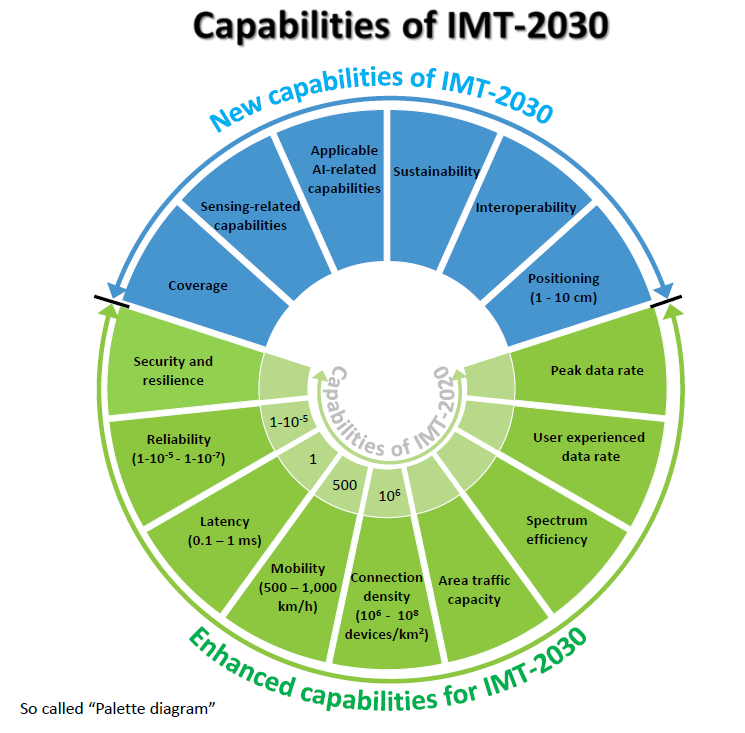ITU160 Partner submission: Russian Federation
Our increasingly virtual world
Submitted by:
Alexey Borodin, Ammar Muthanna, Artem Volkov, Andrey Koucheryavy, Executive Committee for Communications, Regional Commonwealth, The Bonch-Bruevich St. Petersburg State University of Telecommunications, Russian Federation
The near future may resemble a scene from Star Wars. Holographs, digital avatars, robot avatars, flying networks and swarm intelligence are on the rise, thanks to Integrated IMT-2030 networks.
These networks, powered by innovative technologies and the integration of artificial intelligence (AI), promise to transform communication with immersive, user-centric experiences, bridging the physical and virtual worlds in unprecedented ways.
Telepresence suits (a human-robot interface technology) is a key research trend in metaverse development. The 5G/IMT-2020 concept includes Massive Communication; Immersive Communication; and Hyper-Reliable & Low-Latency Communication (HRLLC).
ITU-R Recommendation M.2160-0 expanded these on IMT-2030 to include three more categories: AI and communication, ubiquitous connectivity, and integrated sensing and communication, which can support next-generation services and technologies (see figure on the right).
Digital avatars in the metaverse
Multimedia and human-centred communications, facilitated by IMT-2030, are expected to profoundly integrate physical and virtual worlds, with the metaverse as a platform. Mirror worlds are now being applied virtually and digital avatar technologies are replicating physical environments with remarkable accuracy.
They require cutting-edge tools for virtual mapping, modelling, geospatial analysis, and systems capable of tracking user interactions and histories. Personalized digital avatars offer users exciting virtual experiences.

Holographic technologies
Growing demand for telepresence services has led to a new ITU Standardization Sector-defined metaverse, along with multiverse technologies that will dominate future communication networks and systems. Researchers are gaining interest in this area, which is just getting underway. In our laboratory, MeganetLab 6G, we are developing:
- HoloLink. A platform supporting multiple devices, including holographic terminals, XR-devices, Holotar, and telepresence suits, with innovative methods to minimize network traffic volume.
- Holotar. An advanced holographic avatar system utilizing a holographic robot.
- KOLD Suit. A tool for motion capture, tactile feedback, and kinesthetic data transmission, part of the “Research on Ultra-Low Latency and Ultra-High Density Network Technologies Based on AI for 6G Networks” project.
- HoloFriend. A personal satellite companion enhancing professional and personal interactions within holographic societies.
Challenges
We won’t be meeting those avatars and holograms on the streets just yet. The technical road ahead includes:
- Scalable, decentralized network architectures capable of supporting ultra-dense environments
- Seamless holographic communication protocols
- Interoperability among a wide array of devices and technologies
- Incorporating AI, XR, and robotics into communication ecosystems
- Enhancing user personalization and avatar functionality
- Enabling multisensory telepresence, and interactive holographic environments
Artificial Intelligence in IMT-2030 and metaverse
AI enables pre-standardization processes, which is a natural progression from autonomous network concepts in IMT-2020. The ITU-T Focus Group on Autonomous Networks, part of Study Group 13, explored this first.
Currently, numerous ITU-T recommendations and frameworks focus on integrating AI into communication networks to achieve network autonomy.
The continuity between IMT-2020 and IMT-2030 makes the work on autonomous networks a rational progression in the evolution of 6G/IMT-2030 networks. Autonomous networks will be a specialized part of the IMT-2030 framework, using AI for scalability, efficiency, and user experience.
Disclaimer: The views expressed in this article are those of the author(s) and do not necessarily reflect the views of ITU or imply endorsement.